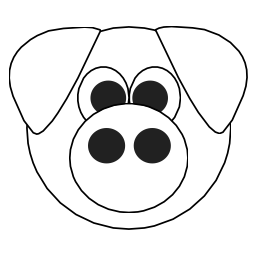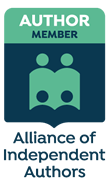Writers' Ways 2: Copyright

One thing I learned in the very early days of attending a creative writing class was that one can not copyright an idea. So, discussing one’s idea of a possible writing project openly can be quite difficult and rather unsafe unless one is 100% sure that the company will appreciate the idea is yours and not their’s to ‘run away with’ and come up with a best seller!
Own it
Look at any book, novel, play, anthology of poems, or published material and spot the: © copyright sign with the authors name and date
Always protect your work with © alongside your name and the date.
For example, all these knots are in my work called The Knowing Knots. It was published in 2010. Hence the copyright would be: © Christine Hawthorne 2010
As another example, at the bottom of all pages on this website you will find the notice ‘Pig Pen © 2021’
Copyright and ownership
Copyright gives details about ‘ownership’ and the terms and conditions as to use of the material in the work. Copyright can apply to literature; drama; music; art; layouts; recordings; broadcasts but for the purposes of this work it applies to writing and art work. Copyright protection lasts for the life of the author plus 70 years.
As has been pointed out, War and Peace went out of copyright 70 years after Tolstoy’s death. But when a new edition was published that had its own copyright. A piece of work may contain a large number of copyrighted words from another work, but permission for the use of these must have been obtained. Any exceptions have to be agreed in advance. Work can be ‘assigned’ or ‘licensed’ by the author again, by agreement. But be very careful with any ‘agreements’ as to what you are agreeing to and ‘giving away’. There are grey areas. You want to retain control.
More information about copyright
I do not pretend to have an extensive knowledge, there are many agencies out there especially with ‘on-line’ forums etc who can expand on this précis and give very current, up-to-date information regarding the legal details. All this can do is make you aware of protecting your work from early days.
Also to be aware that a title is too small to copyright. Just do be aware and keep any title ideas close to your chest. And know you have a responsibility to respect another person’s creative work - as you would want them to respect yours.
Take a look at these websites for more information about copyright in the UK:
https://copyrightservice.co.uk/
https://www.bl.uk/business-and-ip-centre/a-brief-introduction-to-copyright
A second knot of wood
Something which is highly topical at present is THE WORLD. Surely absolutely nobody could have missed how the whole world has been so devastatingly affected for so long by the Pandemic. This is not a subject area I intend to explore here. It is too vast and has been dealt with by people much better qualified than I am to do so. I would defy anyone to say they have not been affected by the outcomes in some way. I will introduce you to my ‘knot of wood’ that, for me represented the world.

The world - my world

By pure chance two things occurred when I was working The Knowing Knots, my project to create a book around twelve knots of wood using my own photos, pictures and writing. Both of these experiences related to my thinking of the world, our world, Planet Earth.
Walking past a potters shop in Saanen, Switzerland one autumn day I espied a piece of pottery on display.

The creator of this work, Anita Doppmann said: “In researching for the CO2 Virus project, my mind came up with the picture of a sick earth. Our mother earth is heating up because of pollution. CO2 is one of the gasses responsible for the climate change.”
Her message is: “If we don’t stop polluting the atmosphere, the consequences may be dramatic. It is our generation which has to change what went wrong in the past.” Anita has granted permission for her image and message to be used in my book and, now, for this blog.
I was delighted to be able to view an exhibition of wood turning at Carpenters’ Hall in the City of London where I saw an exquisite piece of work by Tom Pockley.

Tom has left this work untitled for the viewers to interpret as they may. He did say that the hole in the sphere could be at the bottom – as a symbol of the draining, sapping of the earth’s energy.
I do see this perfect globe being delicately balanced. The globe is a coloured hollow sphere of wood which sits on a base of elm. Tom also allowed me to use both the photo of his work and his thoughts in the book and here.
At the time of developing this work I had two very different experiences both of which related to my thinking of the world - our world - planet earth and I had to get permission from the creators of both pieces to use them in my writing. Fortunately they were prepared to do this.
Lessons from my teachers
Which came first? The writing teacher or the art teacher? To be fair I would put the creative writing teacher ahead of the game. What was her major lesson apart from the copywriting training?
Lesson one: Notebook and pen or pencil.
Always, and she meant always, have both to hand: in a pocket, in a (hand)bag, by the bed, in the lounge, in the kitchen. Notions can happen, be triggered at any time and it is advisable to grab them when they come. Who knows where they can lead? And, if you are working on a plot be prepared to not miss that moment it could be crucial.
What lesson could the art teacher pass on to a writer?
Who ever thought I could paint glass? No, I do not mean getting a paint brush and paint and painting a beaker, jam jar, window or mirror. I mean as an artist with paper, easel, acrylics (water colour, crayons, oils or whatever), and painting a still life on glass.
This was one of the first exercises we were given and from then I saw the world differently. It was a total revelation. I could get depth, the three-D effect. His important lesson was ‘a camera’.
Lesson two: Camera.
Always -and he meant always - have your camera with you to capture something you might need later. Photos can be used for creative writing as well as for art work.
Since that lesson was passed across quite a lot has changed. Smart phones came in which are incredibly sophisticated. I recall son number two going on his ‘world tour’ and so proudly taking with him his newly purchased mega camera with lenses in a ‘disguised’ case. Then him reporting other travellers admiring his set up while he was admiring these tiny things that fitted into a pocket. The point is they all had a camera.
Can adopt these habits and be prepared when inspiration hits?
Next time: another matter to consider, another knot, and something to ponder on.

